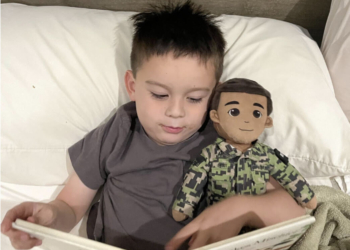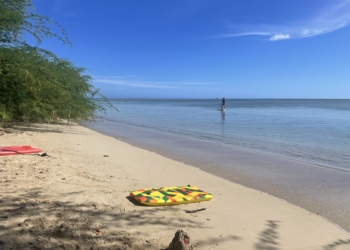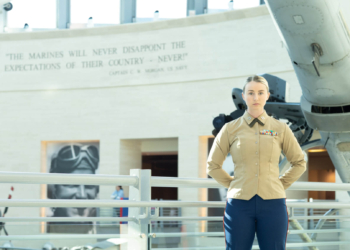There’s nothing like care packages from home, personalized with favorites such as hot sauce, cookies or handwritten letters. This is still a truth despite how online retailers make it possible for deployed service members to order anything from beef jerky to new sheets from almost anywhere in the world. Yet, opening a box of “home” is often still more appealing than a website’s shopping cart.
Graduate student and Army veteran, Odale Cress, designed an exhibit in fall 2018 that highlights the diversity of the military based on her belief that “food is a language, cuisine is a dialect.” The exhibit tells the stories of military service members from World War II to present day conveyed through the contents of their care packages.
The Care Package Story Project is a traveling exhibit that has been up and down the East Coast, having even stopped at USO Fort Drum, New York.
“It helped people who read it see how the care packages impacted the service members when they deployed. Our soldiers would stop by and read it. They had a positive reaction to the stories. Having it at our center was really nice,” said Cheryl Christie, USO Fort Drum center director.

Cress explained that “food is used to communicate and bring people together.” She remembers how morale-boosting treats from home were when she was deployed as a Russian and Spanish linguist during the Cold War. For her birthday, Cress’ mom sent mini pecan pies for her to share with fellow service members that offered them a glimpse into her world back home.
Although many of the stories come from Cress’ friends and family who have served in the military, names are not listed on the stories. Rank and job are the only defining titles listed on the display, which is symbolic of the uniformity of the military. Cress said she “wanted to contrast this with how much personality comes through in a care package.”
Humor, love and connection are plentiful in care packages from home, and it shows in the stories on the display. A corporal cook serving in the U.S. Army in Iraq in 1991 received a package of cookies from home, but with a personal touch: each family member took a bite out of each cookie before boxing them up.
It is important to Cress that the exhibit offers a wide audience the opportunity to connect with the stories through her presentation of the display. Host locations have included Department of Veteran Affairs hospitals and clinics, USO facilities, culinary schools and historical societies.
Also, the presentation always ends with a photo of an unopened package, a tribute to service members who did not make it home.

“We don’t know what’s in the package. All we know is that they served, and that’s what matters,” Cress said.
Cress also plans to add more panels to the display to create the shape of the American Flag, is also working with a historian to recreate care packages dating back to the Revolutionary War and she continues to gather featured stories and build a travel schedule.
In the end, Cress is convinced that care package contents tell a great deal about each individual, and about the people that together make up the military. Whether it’s prawn crackers, a tin of anchovies or homemade biscuits, she feels that diversity deserves to be celebrated.
If you want to know more about the project, visit The Care Package Story Project’s website.
Read comments






































